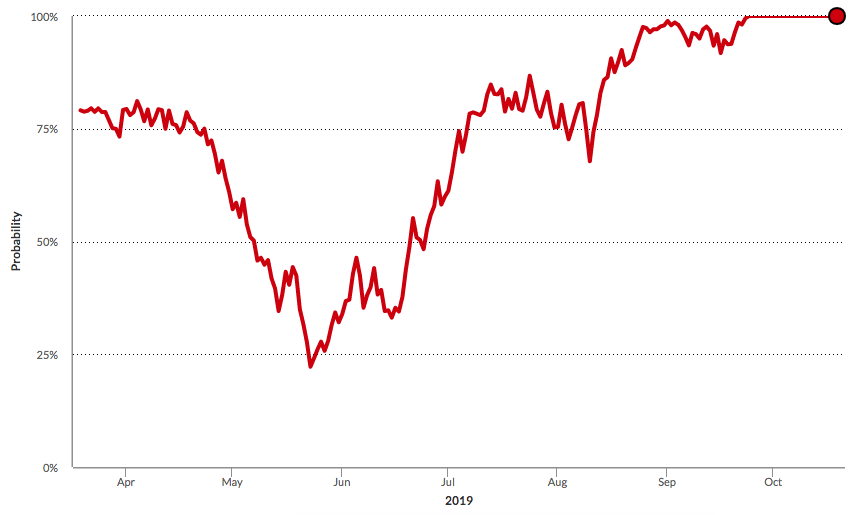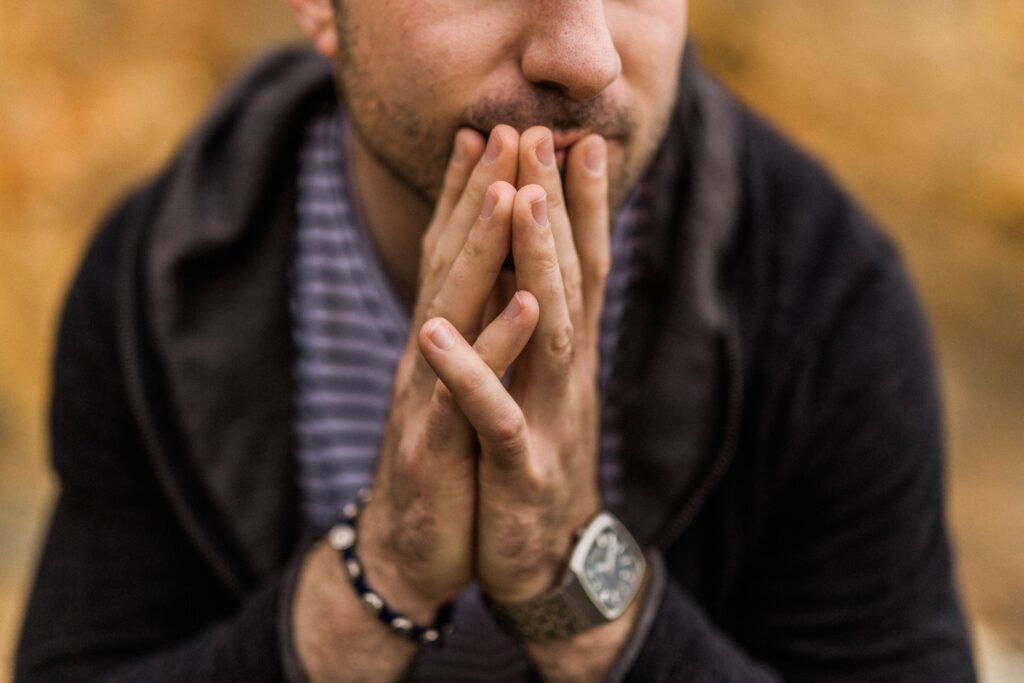
My Washington Nationals are — and I can’t believe I’m typing this — heading to the World Series. They’re a remarkable story. On the morning of May 24, the Nationals were 19-31, with just a 22.2% chance of making the playoffs, according to FanGraphs. You can see what happened next, in the playoff probability chart above. They turned the season around, going from 12 games under .500 to finishing 24 games above .500. On Tuesday, they’ll begin a series vs. the Houston Astros for the championship.
How’d they do it? A lot’s been made of the chemistry on the team, or the positive attitude of manager Davey Martinez. But here’s another wonderful anecdote from MASN reporter Byron Kerr:
There is a long hallway between the coaches’ and manager’s offices and the training area next to the Nationals clubhouse on field level at Nats Park. Along this wall is a collection of baseballs positioned on a long single shelf that runs down the hallway. Each ball represents a win the Nats enjoyed so far in 2019.
Written on each baseball are the names of one or more players who, in the estimation of manager Davey Martinez, were the most valuable in each of those victories.
And as Martinez later mentioned in the piece:
Martinez’s players would come by during the season and pick up each ball and reminisce about that particular victory during their turnaround run.
“Every now and then, I see guys just going in there, staring at each ball and dates,” Martinez said. “And what we’ve done and how we did it. I could tell that they really appreciate it. You hear them say, ‘Oh, man, I remember this. Strasburg was dealing this day.’ Or, ‘(Gerardo) Parra. Grand slam this day in L.A.!’ They all talk about it and remember it. It’s pretty cool to hear ‘em call each others’ names out, knowing they all participated at some point.”
A baseball season’s 162 games long. Opening Day was nearly seven months ago. There are so many games, and it’s easy to forget about all the little moments that led to this one big opportunity. But I love the idea of the wall of baseballs. Every day, the players walk by that shelf and think about those daily achievements — the wins and the contributions that got them there. They’re a public reminder of the work that’s been done over the course of a season.
There are so many ways to bring an idea like this to your office:
-
-
- Have an award that’s given out weekly/monthly to an outstanding teammate (and give out a physical trophy or prize that can sit on their desk)
- Shout out a big achievement in an email to the larger team
- Hold a regular all-hands meeting to celebrate team victories
- Make a public space in your office to highlight teammates who’ve done great work
- Stop by a colleague’s desk to privately say thank you for their effort
However you do it, celebrate those little wins. When your colleagues make a difference, make sure they know how much you appreciate it. You never know what a difference it might make.
———
That graph at top is off the Nationals’s playoff odds throughout the season, as charted by FanGraphs.








